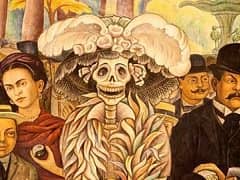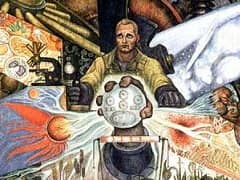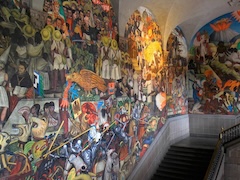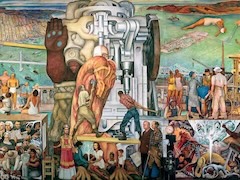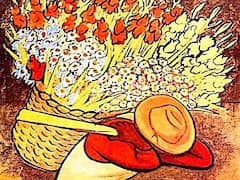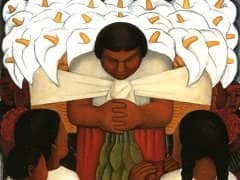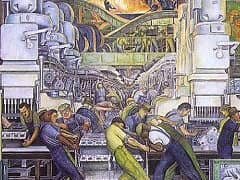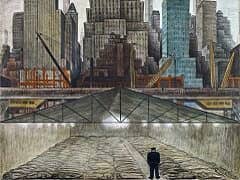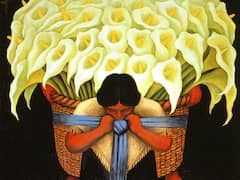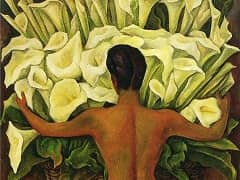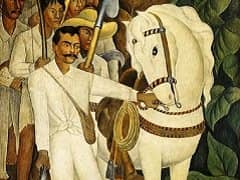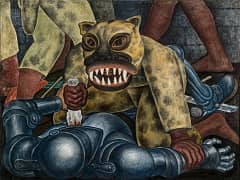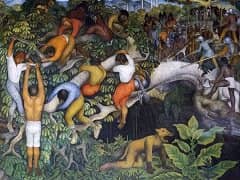Symbolic Landscape, 1940 by Diego Rivera
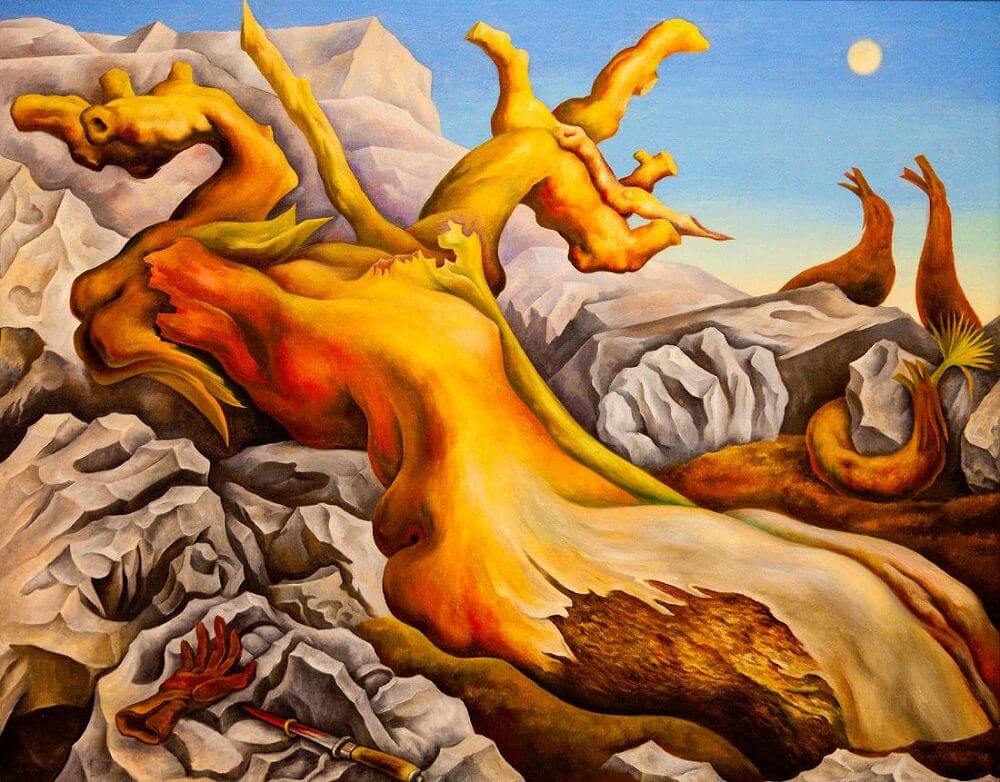
After Rivera's eleven-year marriage to Frida Kahlo, they divorce and Rivera is quite saddened. Many call her the love of his life and Symbolic Landscape presents a very poetic
view of the circumstance through symbols of the natural landscape.
Emerging from the lower right corner is a fallen tree that almost comes alive as it bends and twists its way into the center of the painting. It takes on the sensuous shape of a woman's torso with her back arched in intense
emotion. The bark of the tree is extremely smooth and flows untouched until the very bottom where the rough underside is visible. Surrounding the tree and encompassing her on all sides is rough and jagged stone. The stone takes
on many shapes including a man's face and tightly gripped fists, with one on either side of the trapped tree. The furrowed brow and clenched teeth of the stone face possess two very symbolic objects. A bloody knife with a
wedding band slipped over its hideous blade, and a leather glove seems reminiscent of a dirty deed and altogether out of place in the otherwise all-natural landscape. Far off in the distance, a full moon watches over the scene,
which appears forever captive in its position and at eternal dusk. The colors of the objects in the painting are very natural to the landscape, yet expressive at the same time. The fallen tree takes on the natural tans of
wood, yet it seems to glow with warmth and light, turning it into a golden color. The beautiful contours of the womanly figure in the wood are accentuated by this warm color making the viewer feel as if the tree is actually
alive. The stones are a chilling gray and blue, and although they are true to color, they possess so much emotion. The stone hands and face in their expressive display of anger and strife are only heightened by the cold and
unfeeling color of the stone. The cool blue sky in the far distance, which holds the eerie full moon, is very cold as well, almost turning the rocky terrain into the arctic expanse. The space in the artwork is quite crowded
and filled in the foreground, yet it smoothes out towards the distance. In the foreground, the fallen tree comes right out at the viewer; it is larger than anything else and is definitely the most important aspect of the
painting. The stones that hold the hands and the face are crowded around the tree in the foreground. Yet, the other unmarked stones recede calmly and smoothly into the distance, which only accentuate the importance of the
objects in the foreground. These unmarked stones make an eternal journey towards the horizon, making the landscape appear as if it continues on forever.

